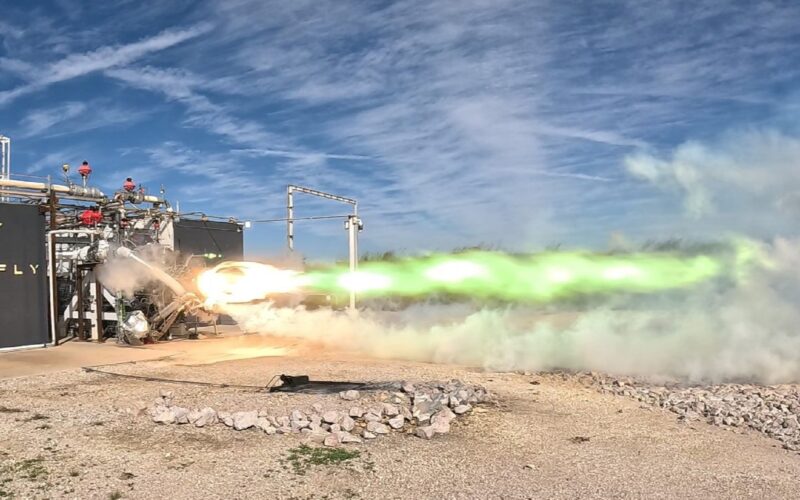Firefly Aerospace has announced that it has completed the first hot fire test for its Miranda engine, which will power Northrop Grumman’s Antares 330 rocket into space.
Firefly Aerospace has designed and built the Miranda engine in just over 12 months of signing the initial contract.
Northrop Grumman and Firefly Aerospace are also developing a new Medium Launch Vehicle (MLV) which will eventually take over from Antares 330.
Antares 330 and the new MLV will use seven Miranda engines (each capable of producing 230,000 lbf or 1.6 million lbf in total) to complete the first stage.
The MLV will also use a Miranda vacuum engine for the second stage that is designed to be more effective at high altitudes.
As a next step, the Firefly team will build up to a full-duration, 206-second Miranda hot fire.
“The incredible progress on our Miranda engines – designed, built, and tested in house in just over a year – is another example of Firefly setting a new standard in the industry,” Bill Weber, CEO of Firefly Aerospace, said. “Building on the legacy of Firefly’s rapidly developed Reaver and Lightning engines, Miranda is the fastest propulsion system we’ve built and tested to date. This achievement reflects our rapid, iterative culture and our vertically integrated approach that allows us to quickly scale up the flight-proven engine architecture from our small launch vehicle, Alpha, to our Medium Launch Vehicle.”
In addition to the Miranda engines, Firefly is designing, manufacturing, and testing the first stage structures for Antares 330 as well as the structures and fluids systems for both MLV stages.
To support vehicle production, Firefly is doubling the size of its facilities at its rocket test and production site in Briggs, Texas, and utilizing new automated manufacturing equipment.
“Together, we have developed a solution that will help change the trajectory of space launch, from commercial to national security and civil space,” Scott Lehr, Vice President and General Manager of launch and missile defense systems at Northrop Grumman, said. “Upgrading the first stage of Antares in parallel with developing the Medium Launch Vehicle enables our two companies to bring a new launch vehicle to market more rapidly while also reducing risk in the design process.”
Antares 330 will be able to launch more than 10,000 kg to the International Space Station with the first flight scheduled for mid-2025.
As the evolutionary successor to the Antares launch vehicle, MLV will first launch in late 2025 and can carry more than 16,000 kg to low Earth orbit with a five-meter class payload fairing that can be customized based on customer needs.

